With an eye on my backcast and my mind on a starwort seam, I threaded a careful loop through the reaching limbs of a Massachusetts pine barren, over a jungle of grass, and delivered a hairwing streamer to its intended slot. A gentle current pulled the fly subsurface, and dream became reality when a golden flash erupted from a tannic shadow to consume the end of my tippet and my rod tip shot skyward.
The fish that came to hand was won quickly, but, despite the atmospheric suggestion of the spring creek setting or the salty air filtering north from Cape Cod’s Buzzards Bay, its identity was neither brown trout nor striper. A familiar face in a strange place, the quivering creature was a spritely eastern brook trout, of which I’ve caught a thousand like. However, I took a little longer than usual to admire this one.
Unlike the fish’s mountain brethren, the six-inch fish in my hand was born in the cold, spring-fed waters of Red Brook, a coastal spring creek and, in a life ruled by the drama of moon phases and tides, leads a piscivorous life sojourning in salt water. But its life story doesn’t end there.
In centuries passed, the sea-run brook trout, or “salters,” that take refuge in the starwort seams and log sweepers of Red Brook enticed anglers from around the country to the numerous coastal streams of New England that supported these sea-faring specks. However, today, Red Brook is one of the few remaining, ecologically intact salter streams in New England, and a figurehead among those, though only as a result of a series of conservation successes.
Before its damaging effects on the fishery were understood, land near the headwaters of Red Brook was mined for bog iron. Later, the land was converted to cranberry cultivation, and dams were installed along the flowage to flood the bogs. As a result, the brook’s coldwater chemistry was ruined, and the salters were forced out.
Beginning in 1867, Theodore Lyman III, a fisheries commissioner for the state of Massachusetts, began studying the effects of such practices on the brook trout of coastal streams. It was Lyman who, on his own accord, purchased a house and 638 acres of land surrounding Red Brook, ultimately protecting its declining salter population. In the 1990s, the Lyman property was donated by the Lyman family and put into a conservation easement managed by Mass Fish and Wildlife and the Trustees of Reservations, who, together with the Southeastern Massachusetts Chapter of Trout Unlimited, joined forces to get dams removed, woody and artificial cover installed, and an extensive monitoring protocol established. Today, the 4.5-mile brook is now managed under special regulations, and the three organizations uphold the bulk of management.
“Think of Red Brook as a 20-year, $10 million conservation project,” said Geof Day of SRBTC. “The people that work on this project on Red Brook have been working on this for years before the coalition existed.”
In fishing the brook, if you pay attention, you may notice the presence of artificial structure, and the occasional pipe used for fish collection and tagging running out of the river. The structure is the result of dedicated work of Southeastern Massachusetts Chapter Trout Unlimited volunteers, and the tagging system, the combined work of the Massachusetts Division of Fish and Wildlife, aided by USGS, MA/RI Council Trout Unlimited, Southeastern Massachusetts Chapter of Trout Unlimited volunteers, and others.

“We also have a lot of volunteers fishing in there and learning about the fish,” said Day. “Volunteers also made sure that system was catch and release, and are also in there policing the area. The more people we have in there, the more we learn.”
Day will admit that the seasonal movements and lifestyle of the salters is far from well-defined, but he is excited to tell that the more that’s learned on Red Brook, the better equipped they are to extend their message and management efforts to the other systems on the Cape.
In the meantime, it’s anglers and other visiting outdoorsmen and scientists that are so taken by Red Brook, as Lyman, countless salter-infatuated volunteers, and I was, that encourage a hopeful future for the salters of Cape Cod.




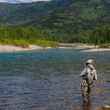
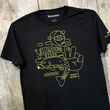

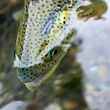



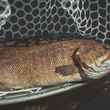
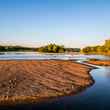











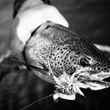



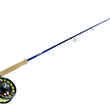
Comments